In the early days of reviewing the best star projectors, we found the market was rather limited, offering only a handful of options. Fast-forward to today and the market boasts a plethora of models, each claiming to provide a unique experience.
Specifications
Size: 160mm x 165 mm x 162 mm
Weight: 500g
Bulb Type: 3 Watt LED
Rotation: Yes
Sleep timer: Yes
Speaker: Yes, in-built sounds
Projection Surface: 5ft x to 8.5ft
Amidst the competition, Sega Toys’ former model, the Homestar Flux, has remained our top recommendation for the best star projector despite becoming increasingly challenging to find. That said, the Pococo Galaxy projector has more recently given it a run for its money. We recently got our hands on Sega Toys’ latest model, the Homestar Matataki and we were eager to get our hands on it to see how it compared to our current top picks.
Sega Toys Homestar Matataki: Design
- Intuitive user interface
- Finish and build are not as nice as the Flux
- Compact, but a similar size with other star projectors
Throughout this review, we will undoubtedly compare it to the popular Homestar Flux we reviewed in 2022.
The Flux is currently on Amazon for a punchy $259 (much more than when we reviewed it) and the Matataki is listed at a much more reasonable $109. You’d usually expect newer products to be more expensive, so why the disparity here?
One reason, perhaps, is the aesthetics and feel of the two models. The Flux feels more premium; it looks like it’s been made for space-interested adults. The Matataki feels more plasticky, more toy-like. The color of the Flux, and the satin black finish also add to the more sophisticated appeal. The Matataki is available in blue or white and doesn’t have that nice satin finish.
Both models feature a sleep timer, shooting star, power and rotation button, and the Matataki has additional controls for the built-in-sound functionality — three sound selection buttons and a volume control.
The disk draw is practically the same, and both models feature a focus ring around the projector’s glass.
The buttons are still not visible in the dark; it would be really helpful if the text glowed just enough to see which button does what. That said, it won’t hurt if you press the wrong one by accident — apart from perhaps jolting yourself awake if you accidentally activate one of the sounds while in a slumber.
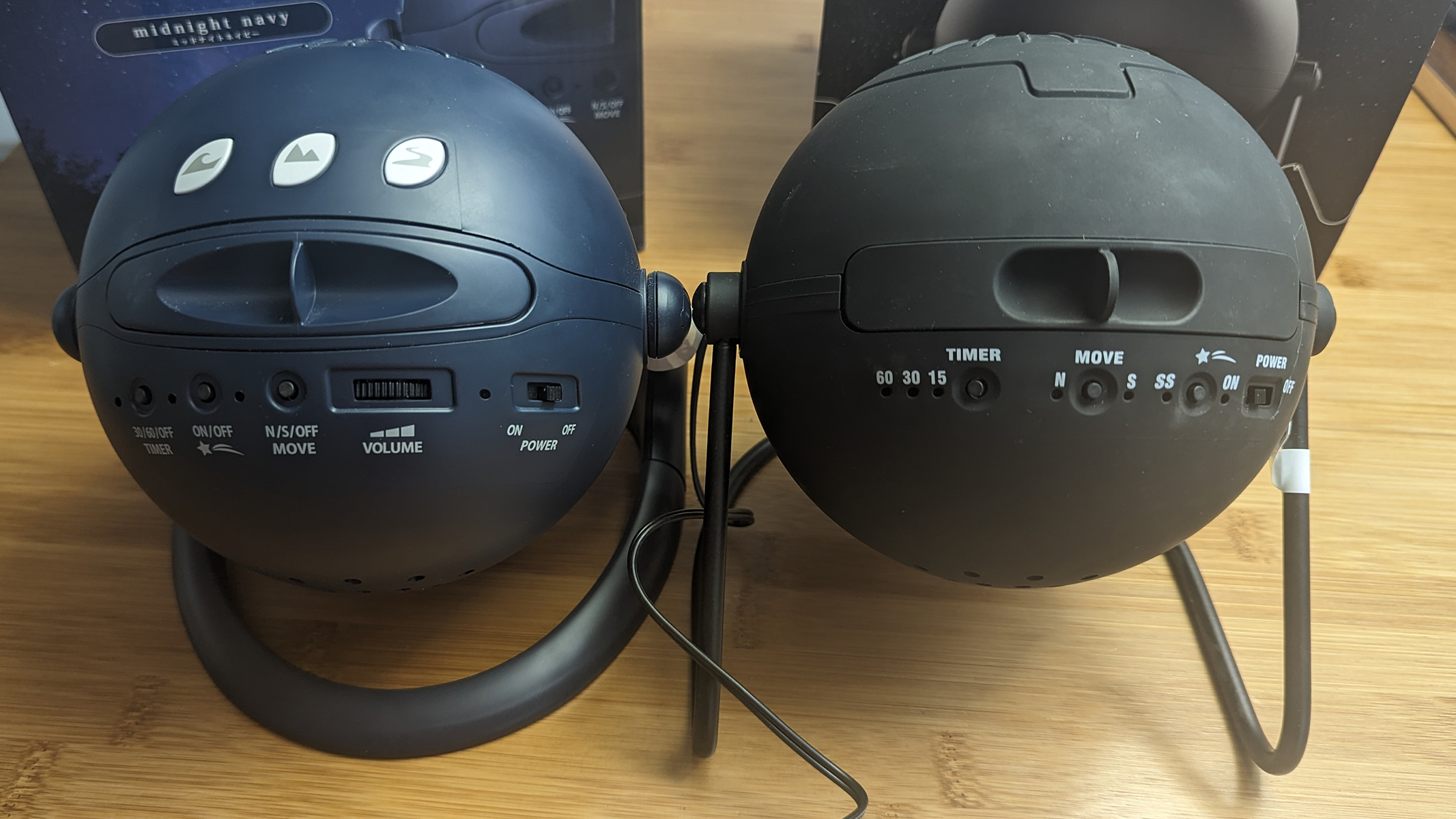
Both units are fixed to a stand, and the projection can be rotated vertically 360 degrees. The Matataki has teeth that hold it firmly in the desired position, producing a clicking sound as you rotate it. On the other hand, the Flux doesn’t have such teeth and hence is slightly less restricted in terms of positioning — the difference in freedom of movement is minimal, down to mere millimeters.
The external packaging of the Matataki is perfectly adequate. It showcases an image of the projector as well as a night sky scene with the word ‘Homestar’ on it. However, it does not mention ‘Matataki’ anywhere. While it would make a good gift, the Homestar Flux packaging looks better and has a more premium feel.
Sega Toys Homestar Matataki: Performance
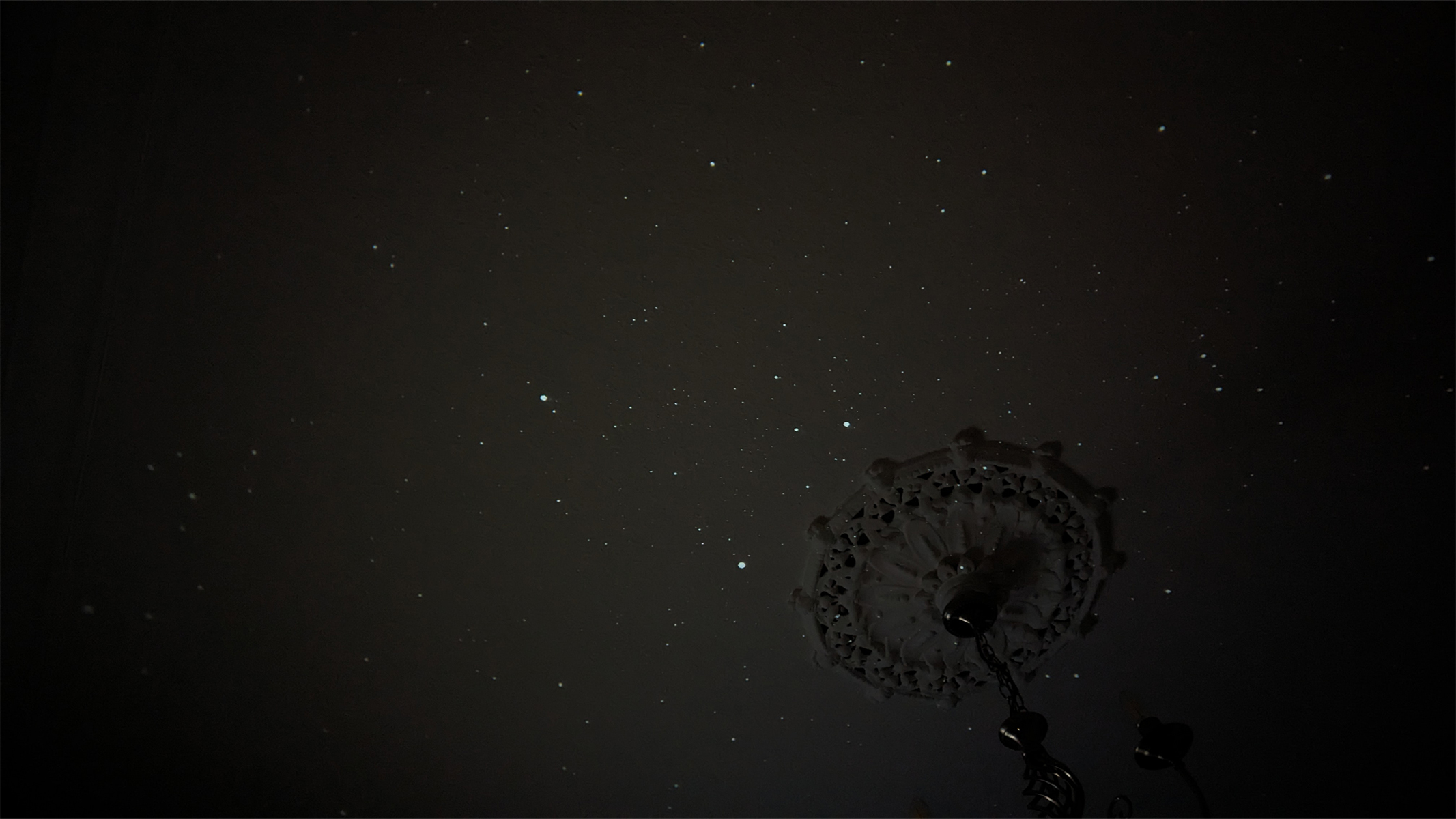
- Good brightness
- Subtle twinkling
- Quiet motor
The 3-watt LED is noticeably dimmer than the 5-watt LED found in the Flux. The room needs to be almost completely dark to see the projection, though some users may prefer the softer image to the vivid high-contrast points of light the Flux emits.
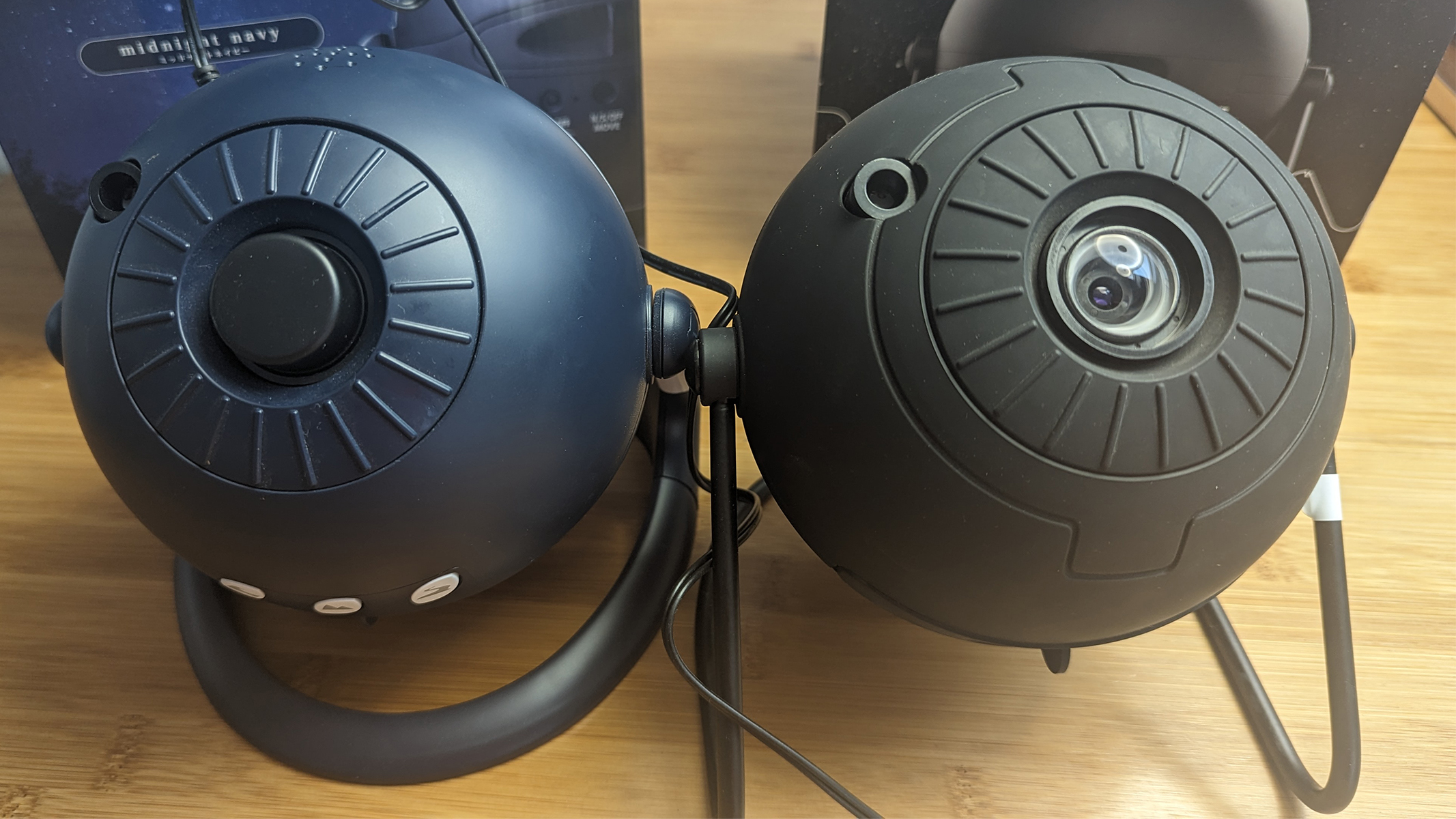
The imagery is decided by whichever disk you insert. It comes with a disk containing 60,000 stars, and a disk containing 10,000 stars that is to be used in conjunction with the ‘twinkle plate’. When combined (both disks in the draw at the same time), the projection gives the illusion of twinkling stars, adding a different dimension to the projector and making the experience more immersive — we like this feature, it does make it feel more realistic than the Flux even though the stars aren’t as sharp or bright.
Like the Flux, the rotation motor is fairly quiet. It is by no means as quiet as the Pococo Galaxy — which is near silent — but it’s certainly not offensive, especially if you have a movie, music or one of the built-in sounds playing whilst the motor is whirring.
Sega Toys Homestar Matataki: Functionality
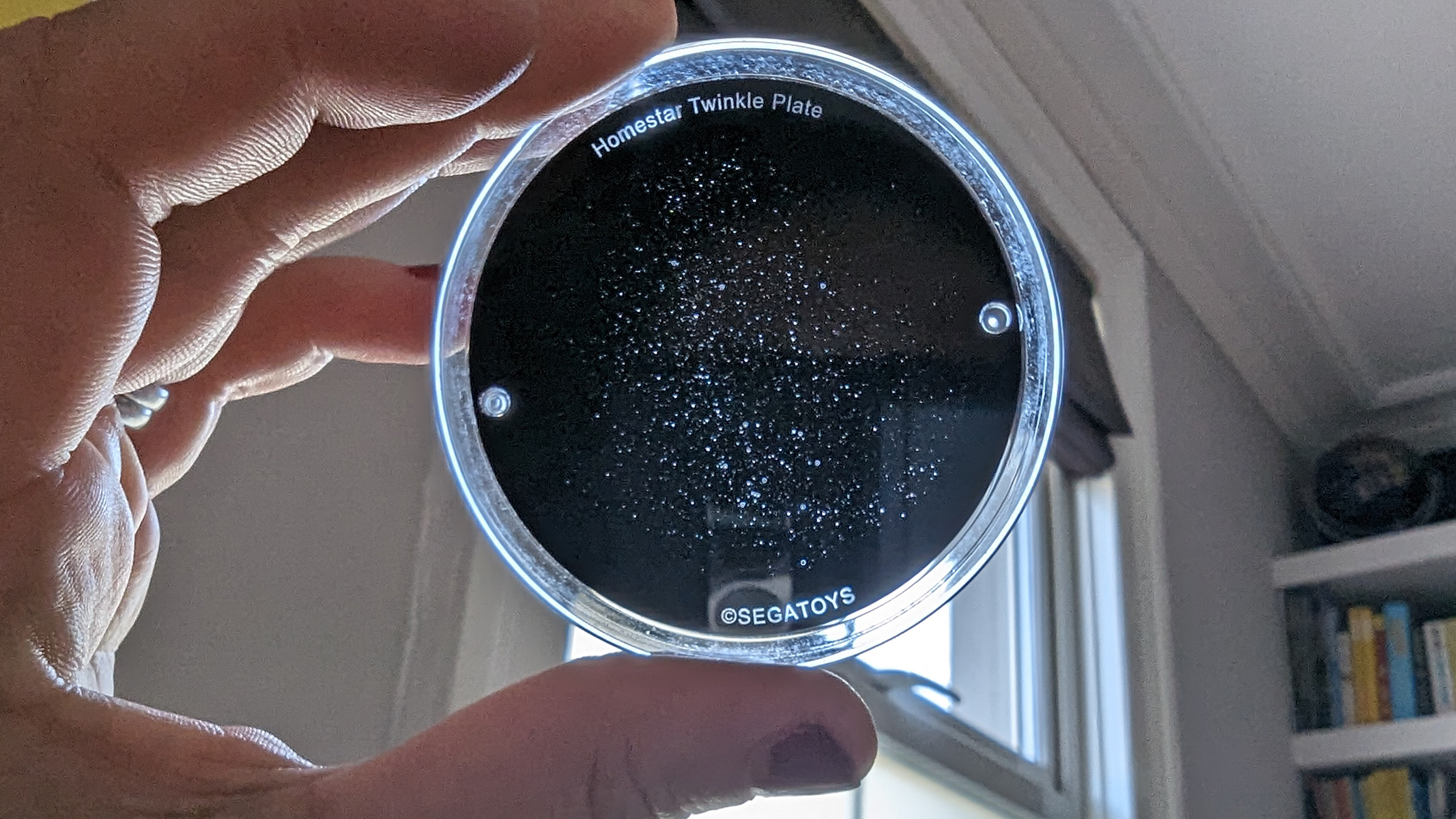
- Fixed positioning
- Mains powered
- In-built sounds
We touched upon the in-built sounds above, but as this is a new function that’s been added to the Homestar range, it’s worth expanding on. There are three buttons, which appear to display icons of the sea, the mountains and running water. Three sounds are loaded to each button to make nine in total.
We regularly use sound to help us get to sleep, so while the idea here is nice, it’s so easy these days to find interesting sounds to listen to on the likes of Spotify or YouTube, having inbuilt generic sounds seems a bit unnecessary. The speaker quality is fine to a certain volume, but the ‘natural sounds’ are so generic and just play continuously on a loop until the power is switched off. In all honesty, we found them to be more irritating than relaxing and we’ll continue to find sounds to listen to on other sources to use alongside the projection rather than activating the inbuilt ones.
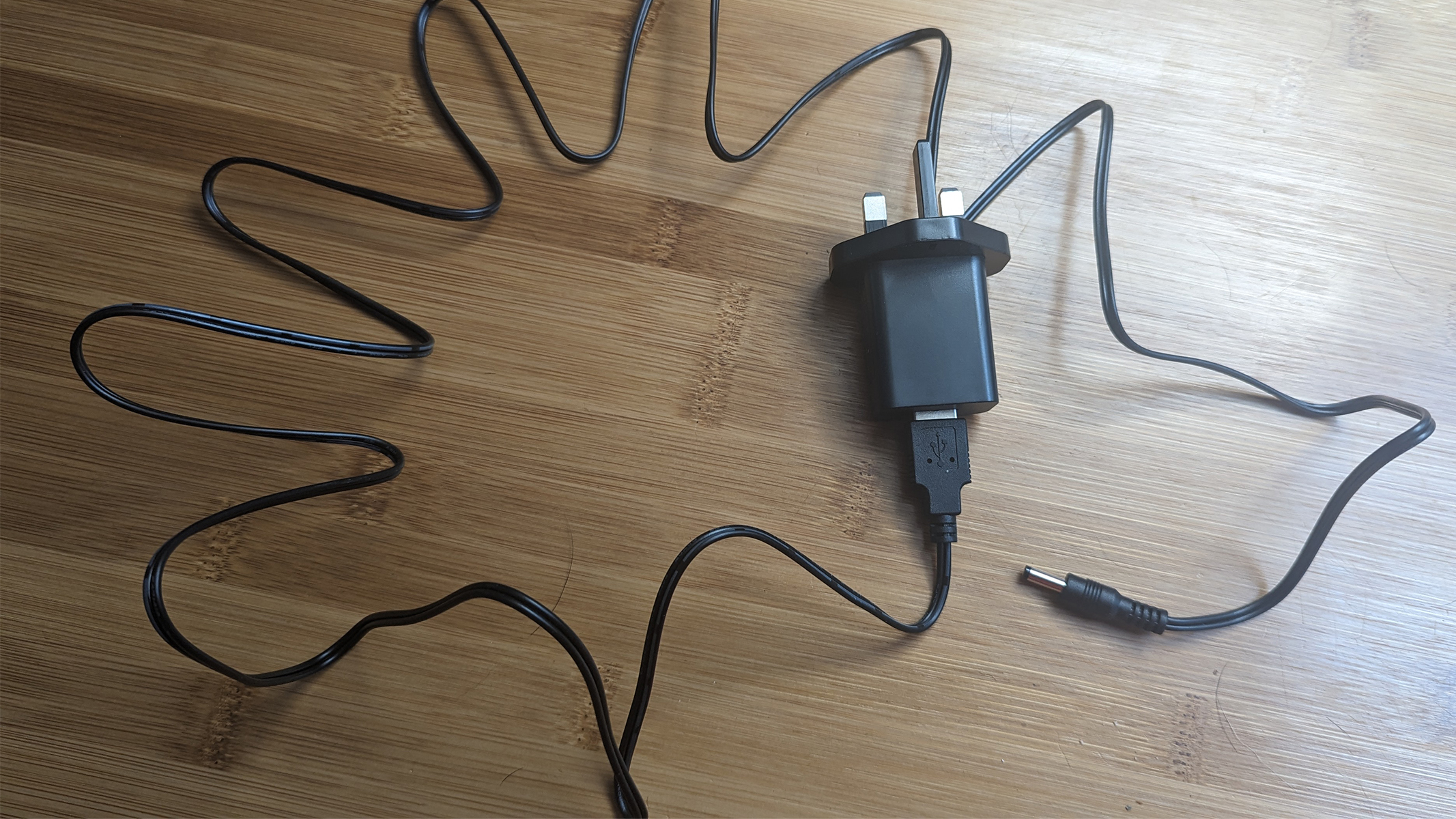
The Mataki still uses an old style DC charging cable, although the USB-A end can be plugged into another power supply as well as the supplied plug. We’d prefer that the unit be powered by a USB-C connection, or at least USB-A on the device end, as we’re sure most people are.
We also wish Sega Toys had integrated a rechargeable battery so it doesn’t have to be plugged into the mains while in use. This limits positioning availability somewhat, as you have to stay near mains power. Other brands have opted for the rechargeable approach and we’re surprised Sega Toys didn’t here.
Should I buy the Sega Toys Homestar Matataki?
We’ve compared the Matataki and the Flux throughout this review, so you should be able to decide which one to go for if you’re choosing between the two. The Matataki is more affordable and readily available than the Flux, and given the big difference in price, unless you really want the premium ‘look’ and brighter, sharper images, the Matataki is a perfectly reasonable projector.
Don’t forget, there are plenty of other great star projectors on the market. The Pococo Galaxy star projector is one such example. It is also a disk projector, with a plethora of add-on disks available, but it has the bonus of being rechargeable. We found the imagery to be vivid and bright, and the motor is near-silent. Great if you’re using the projections as a sleeping aid.
If you’re looking for a space-themed projector that’s not necessarily scientific, but more for fun and inspiration, we highly recommend the Astronaut Starry Sky Projector. It projects beautiful patterns and laser lights on the ceiling, and despite being a novelty model, it’s of surprisingly good quality. At around $30, it’s great value for money.
The BlissLights Sky Lite Evolve is an excellent projector that provides high-quality non-scientific projections. It comes with app and voice control features, along with color blending technology that allows you to customize the projections according to your mood. Using the app, you can easily adjust the rotation speed, brightness, theme, and more. Handily, the sleep timer can be set from one minute to 24 hours.



